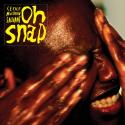Lizzy Mercier Descloux was an early adopter. In 1975, she travelled from her Paris home to Manhattan and saw The Ramones, Patti Smith, Television and the Richard Hell-edition Heartbreakers. Although the first issue of the New York fanzine Punk came out at the end of the year, punk rock was not yet quite codified. Nonetheless, there was a scene and something new was in the air. Descloux had to check it out and on her return to France, she co-founded the new music monthly Rock News.
The new magazine was dedicated to The Velvet Underground. Iggy Pop was its first issue’s cover star. There were articles on John Cale, Lou Reed, The New York Dolls and current New York goings-on. Pre-punk and what became punk were caught in flux: a transition she was well-placed to feed off. With her life and business partner Michel Esteban, Descloux was then running the hip Les Halles music shop Harry Cover which, along with Marc Zermati’s similarly inclined and located Open Market, provided a focus for the evolving French take on punk.
 Descloux soon moved to New York, would share an apartment with Patti Smith (pictured left with Descloux in 1977) and, in 1977, publish a volume of her own poetry. Richard Hell fell for her and contributed to her book. It was inevitable she would make records but when they came, they were not punk.
Descloux soon moved to New York, would share an apartment with Patti Smith (pictured left with Descloux in 1977) and, in 1977, publish a volume of her own poetry. Richard Hell fell for her and contributed to her book. It was inevitable she would make records but when they came, they were not punk.
Fast-forward to 1984 and Descloux is topping the French charts with “Mais où sont passées les gazelles?” The single was a version of a South African Shangaan disco hit. The brush with pop stardom was short-lived and the fact that she abandoned music after 1988 demonstrates that mainstream success cannot have been Descloux’s goal, but she was at all times in touch with movements, sounds and styles at the moments just before they were ready to cross over. She began painting, moved to Corsica in the Nineties and, sadly, died of cancer in 2004.
The soundtrack for much of Descloux’s journey is charted on her five albums. Her debut, Press Color (1979), was reissued last year. Following this, the remainder of her albums are now reissued, making her entire catalogue available for the first time since the 1980s with new editions of Mambo Nassau (1981), Zulu Rock (1984), One for the Soul (1986) and Suspense (1988). Each reissue is supplemented by bonus tracks (single-only sides, alternate versions in French, remixes and the odd shelved track). Liner notes for all five are by academic and former music journalist Vivien Goldman. Together, these diligent releases represent the last word on a one-off artist who recognised no boundaries.
Descloux’s records were issued by the NYC-based ZE, run by Esteban and British émigré Michael Zilkha. Island Records distributed ZE, so anything on the label was guaranteed some level of exposure. But Descloux would take time to break through.
 Her debut album Press Color was preceded by a fantastic EP credited to the pseudonymous Rosa Yemen (its six tracks are included on the Press Color reissue). On it, Descloux accompanies herself with a fractured, twisting guitar placing her alongside NYC no wavers Mars and Britain’s Slits. She had taught herself to play. Press Color was more formal, more polished and opened with an ESG-presaging take on Arthur Brown’s “Fire”. Along with a cover of the “Mission Impossible” theme, the album posited Descloux as an arty purveyor of minimal disco aimed at the head as much as the feet. There was also a clear Highlife influence.
Her debut album Press Color was preceded by a fantastic EP credited to the pseudonymous Rosa Yemen (its six tracks are included on the Press Color reissue). On it, Descloux accompanies herself with a fractured, twisting guitar placing her alongside NYC no wavers Mars and Britain’s Slits. She had taught herself to play. Press Color was more formal, more polished and opened with an ESG-presaging take on Arthur Brown’s “Fire”. Along with a cover of the “Mission Impossible” theme, the album posited Descloux as an arty purveyor of minimal disco aimed at the head as much as the feet. There was also a clear Highlife influence.
The next album, 1981’s Mambo Nassau, was recorded at Island boss Chris Blackwell’s Compass Point Studios in the Bahamas. Although smoother than Press Color, it had the same African components but is less satisfying as Descloux sounds suppressed: it is more about the session players than her. Her identity was not clear.
Zulu Rock (1984) was entirely a Descloux construct. Before its release she took the album’s producer, Adam Kidron, through Africa with her to search for the sounds which would drive it and landed up in Soweto. Although her singing was the most conventional it had been to date on the album, and “Mais où sont passées les gazelles?” was a hit, she did not become the Madonna figure she could have been. Descloux had the music business support, a firm grasp on her image and was charismatic. But instead of bringing it all together in a coherent, digestible package which could have helped repeat the success, she set off on another tangent.
 Although One for the Soul (1986) was also made with Kidron, it was inspired by and made in Rio De Janeiro. Brazil suffuses the album, but it was her most disorderly and features takes on blues, jazz, reggae and soul, and also includes Chet Baker’s last performance on record. Head for One for the Soul and Press Color as evidence of Descloux’s singularity.
Although One for the Soul (1986) was also made with Kidron, it was inspired by and made in Rio De Janeiro. Brazil suffuses the album, but it was her most disorderly and features takes on blues, jazz, reggae and soul, and also includes Chet Baker’s last performance on record. Head for One for the Soul and Press Color as evidence of Descloux’s singularity.
Two years later, on the UK-recorded Suspense (1988), Descloux comes across as disinterested, and matters aren't helped by the combination of a studio gloss, hints of mainstream new wave rock and uncomfortable nods to synth-pop which all but obliterate her presence. What became her final album was not produced by Kidron and could have done with his empathetic approach.
With Suspense, Descloux had ended her long journey around the world and its music, but both she and times had changed. Four years earlier, she could have grabbed the brass ring and competed with Madonna. She might also have broken through like Neneh Cherry. But instead, she followed her muse wherever it took her. By doing this, Lizzy Mercier Descloux stayed true to the punk ethos which had inspired her in the first place.















Add comment